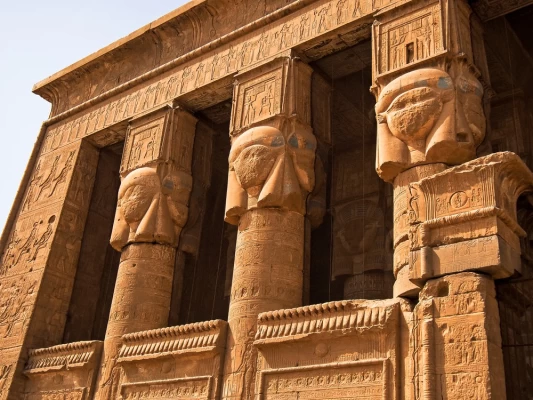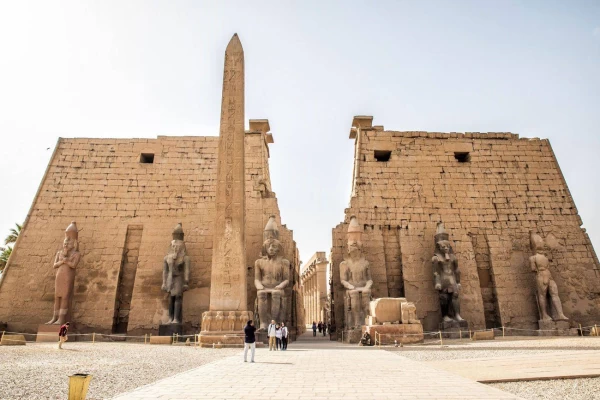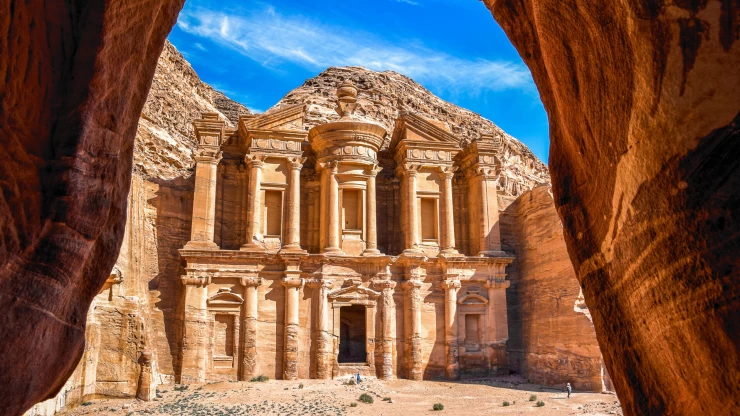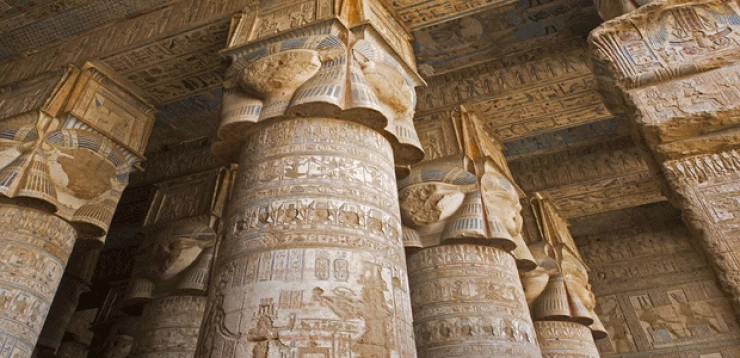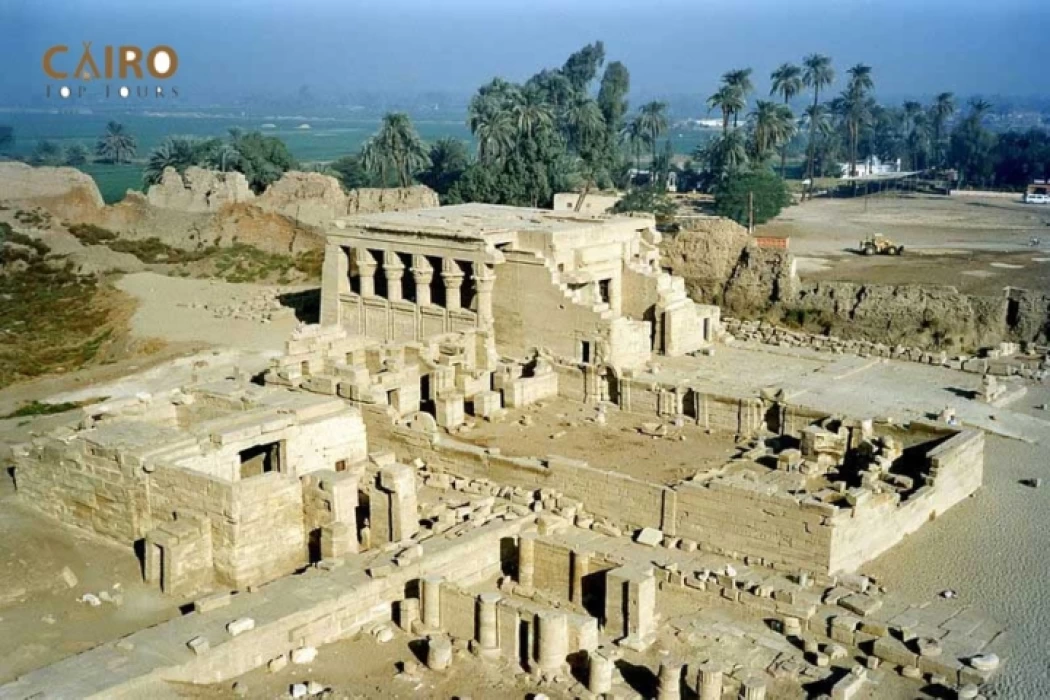
Temple of Dendera
Dendera Temple Complex is characterized by its Greco-Roman architectural style, situated in the contemporary town that occupies the ancient site of Tentyra, a name that translates to "Holy Pillar" and was recognized during the Hellenistic period.
Researchers suggest that this designation may be linked to the Greek goddess Aphrodite, who epitomized beauty in ancient Greek culture.
Hathor Temple at Dendera
The temple's construction was initiated by Ptolemy XII and was largely completed under the reign of Queen Cleopatra VII.
Cleopatra VII, the final ruler of the Ptolemaic dynasty
Hathor, revered as the goddess of joy and love, was annually transported by boat to Edfu to reunite with the god Horus. This event was followed by the Dendera celebration, marking the divine union. On the first day of each year, Hathor's statue was carried up the grand staircase to the open kiosk atop the temple, symbolizing her rebirth by the sun.
Dendera Temple
Dendera Zodiac
The complex features a necropolis containing tombs from the Early Dynastic Period and includes several significant structures:
- The main temple dedicated to Hathor
- The Temple of the Birth of Isis, the Goddess of Magic in Ancient Egyptian belief
- A Sacred Lake
- A Sanatorium
- The Mammisi of Nectanebo II, the last king of the 30th dynasty
- A Christian Basilica
- A Roman Mammisi
- A Barque shrine
- The gateways of Domitian and Trajan
- The Roman Kiosk.
The principal edifice within the complex is the Temple of Hathor. Although the current site has undergone modifications, its origins trace back to the Middle Kingdom and it remained in use until the era of the Roman Emperor Trajan. The existing structure commenced construction during the late Ptolemaic period, with the hypostyle hall being completed in the Roman period under Tiberius.
Visitors have the opportunity to book our Tour to Dendera and Abydos from Luxor, or an Overnight Tour to Abydos, Dendera, and Luxor from Cairo. Additionally, a variety of tours throughout Egypt are available for exploration.
"Dandara" is the Arabic designation for the ancient Egyptian city known as "Eunt." The significance of Denderah lies in its status as the primary center for the worship of the goddess Hathor, who was associated with the Greek goddess Aphrodite. The Temple of Dendara is recognized as one of the most well-preserved temples from ancient Egypt. It stands as an architectural marvel, a distinctive representation of the arts, and a thorough documentation of Egyptian religious beliefs. The temple is notable for its expansive area and intricate carvings that depict the attributes and narratives of the goddess Hathor, the deity of love and beauty. Despite extensive restoration efforts, including enhancements to the Great Hall of Columns, the Hall of Illumination, and the installation of exterior lighting systems, the temple continues to harbor numerous secrets.
A particularly remarkable area within the temple is The Great Hypostyle Hall, where visitors can experience the awe-inspiring legacy of ancient Egypt.







